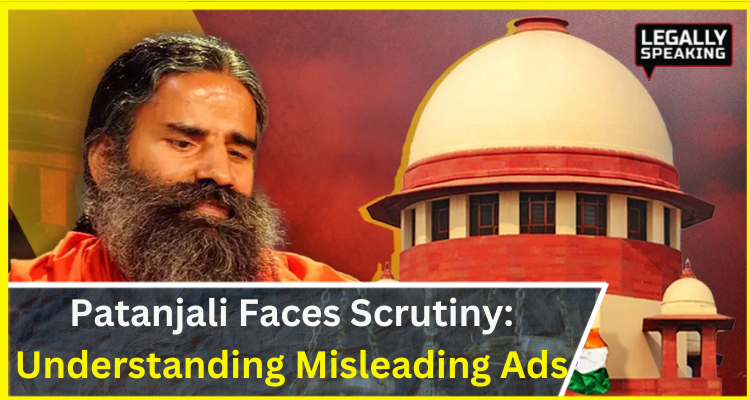
The courtroom drama surrounding misleading advertisements published by Patanjali Ayurved, has forced Patanjali to issue apologies in a staggering 67 newspapers. This unprecedented move not only underscores the gravity of the situation but also signals a newfound commitment to accountability and transparency in the realm of advertising. With an assurance that errors of the past will not be repeated, Patanjali Ayurved seeks to reaffirm its respect for the apex court while embarking on a journey towards regaining public trust.
From exaggerated product claims to false endorsements, the landscape of advertising is riddled with pitfalls that can lead unsuspecting consumers astray. As the spotlight intensifies on advertising ethics, it becomes all the more important to discuss and learn about what constitutes as a misleading ad as per the Indian Law.
WHAT IS A MISLEADING AD
The Consumer Protection Act of 2019 extensively talks about what shall be deemed as a false or a misleading advertisement. The Section 2(28) of the Consumer Protection Act, 2019, defines a misleading advertisement concerning any product or service. It says that any advertisement shall be deemed false if it includes advertisements that intentionally hide important information or provide false assurances likely to deceive consumers regarding the nature, substance, quantity, or quality of the product or service. Furthermore, Section 2(48) (f) of the Act encompasses misleading advertisements within the scope of unfair trade practices. Furthermore, the section 10 of the same act, establishes a Central Consumer Protection Authority which is a Central Authority which will deal in matters related to violation of rights of consumers, unfair trade practices and false or misleading advertisements.
GUIDELINES BY THE CENTRAL CONSUMER PROTECTION AUTHORITY
And in June 2022, this central authority issued a set of guidelines that extended their coverage to all types of advertisements, regardless of their presentation style or platform, and was addressed to manufacturers, service providers, traders, advertising agencies, and endorsers, ensuring that everyone was under the purview of the Guidelines. The guidelines ask every party involved in the field of advertising to contain the true representation of the product or service advertised and not mislead the consumer through any kind of exaggeration whatsoever. And in cases of violation of the provisions concerning misleading advertisements outlined in the Guidelines, the CCPA has the authority to levy fines. Manufacturers, advertisers, and endorsers may face penalties of INR 10 lakhs for initial violations. And in case the offence is repeated, then the fine for the habitual offender may exceed to INR 50 lakhs.




